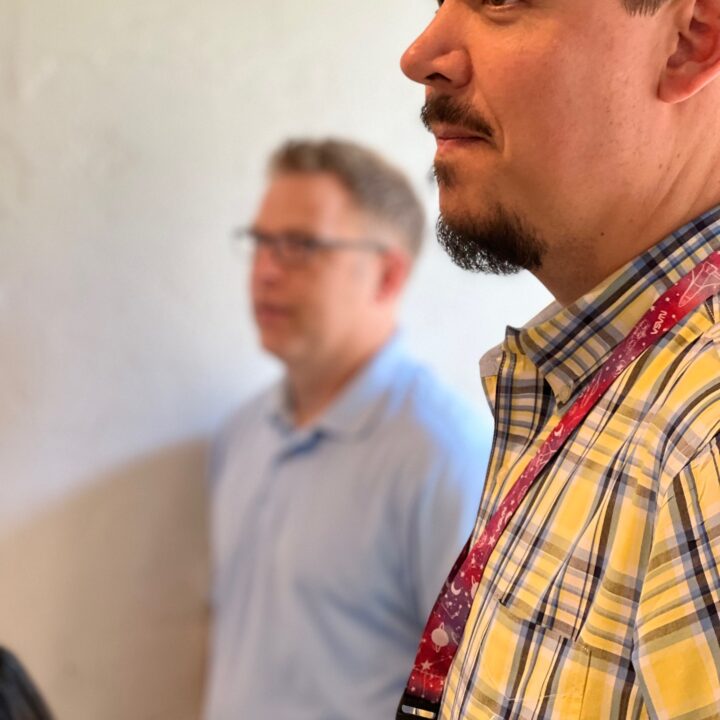Nonprofit organizations face unique challenges when it comes to selecting a technology partner. In a world where technology is becoming increasingly important to achieving nonprofit goals, choosing a trusted partner can make all the difference. However, with a limited budget and a focus on delivering impact, nonprofits must navigate a complex landscape of solutions and vendors, sometimes without the in-house expertise necessary to make informed decisions.
With a good partner, you gain a trusted advisor that navigates you through the experience, guides you through challenges, is steadfast and reliable even when you encounter road bumps, and works with you to identify solutions that are the right fit. This results in a successful partnership and, in turn, successful outcomes. With a partner that’s not a great fit, you will frequently be on the defensive, unclear about expectations, left with more questions than answers, and likely dissatisfied with the results of your investment.
We’ll examine three criteria that can help you bring on the right technology partner once you decide that doing so is the best next step for your organization.
Organizational Maturity
Why It’s Important
An organization’s maturity is an indicator of its level of development, from culture and processes to systems and infrastructure. By evaluating a potential technology partner’s organizational maturity, nonprofits can determine whether the partner has the capacity to meet their specific needs and support their long-term goals. While there are many technology partners out there to choose from, it’s a great idea to connect with one that has a history of expertise and an array of clientele to offer your organization the best support possible.
What It Looks Like
A partner with organizational maturity is likely to have made greater investments in research and development, have a more extensive client base, and have greater experience in serving nonprofits or your domain area. They have likely established stronger business foundations and almost certainly rely on a strong in-house team requiring minimal or no reliance on subcontractors. They’ve probably accumulated a fair amount of “lessons learned” and longevity suggests they invest in their organization and team through continuous quality improvement initiatives to help their team do their best work.
How to Assess
Here are a few indicators to help you assess your potential partner’s organization:
Longevity: Working with a partner that has years of experience demonstrating their expertise can save you the pains of working with a fresh organization that is still experiencing growing pains. Consider how long they’ve been in business, how they build their business, and how successful they have been throughout the year(s).
Process: An organization that has been around a while has developed tried and true processes that ensure dollars are spent wisely and efficiently, while also indicating that the team knows what works — and doesn’t — to get you to your desired outcomes. If an organization has the proper foundations in place to do its best work (i.e., having clear processes outlined and defined from the planning stage to the launch of the project), it will allow them to help you do the same.
Team: You’ll be working closely with the staff members at this organization, and it is essential to work with a team that has the skills and collaborative nature that you need to be successful. Inquire about the history of their team, their skill set, and if they rely on full-time staff or contractors to tackle their projects to get a sense of who you will be working with.
Relevant Experience
Why It’s Important
Nonprofit organizations have unique needs, challenges, and opportunities that may differ significantly from for-profit companies. A technology partner with relevant experience working with nonprofits similar to yours is more likely to have a deep understanding of your organization’s specific requirements and goals, whether concerning complex legal or regulatory landscapes or details of the domain in which you work, whether public health, education, philanthropy, or beyond.
Working with an experienced partner can result in the development of more tailored solutions that meet your nonprofit’s needs effectively, more accurate project timelines and budgets, and a higher likelihood of success. By selecting a technology partner with relevant experience, nonprofits can reduce the risk of delays, budget overruns, or project failures, and increase the chances of achieving their long-term goals.
What It Looks Like
Your technology partner will have had experience working with organizations similar to yours, both in size and in the domain you work in. They understand the complexity of the space your organization works in and have solutions to address those particular challenges. They can offer informed responses and clarity in answering questions you may have along the way. They possess the hard and soft skills needed in a strong partnership with breadth and depth in working with organizations like yours.
A technology partner with relevant experience in the nonprofit sector will have a deep understanding of nonprofit culture and values, such as social impact, transparency, and accountability. They should have a broad understanding of the technology solutions and tools commonly used by nonprofits, such as case management tools, fundraising software, donor management systems, and volunteer management software.
A positive indicator of experience working with organizations like yours can be the relationships they have with others within the nonprofit community. These relationships can provide access to valuable resources and expertise, such as funding opportunities or subject matter experts that can elevate your experience working with this partner.
How to Assess
Here are a few ways to assess a nonprofit technology partner’s relevant experience:
Ask for references: Request references from the technology partner and reach out to other nonprofit organizations they’ve worked with. Ask about the partner’s experience working with nonprofit organizations similar to yours and the results they were able to achieve.
Review case studies and success stories: Look for case studies and success stories on the technology partner’s website or review marketing materials highlighting their experience working with nonprofit organizations. These examples can provide valuable insights into the partner’s expertise and capabilities.
Evaluate their technology solutions: Look at your potential partner’s product or service offerings and evaluate whether they align with the needs of nonprofit organizations. Ask the partner to provide information about the client experience and ask for a demo or walkthrough of their technology solutions. Ask specific questions about how their solutions can meet your organization’s unique needs.
Communication and Relationship-Building
Why It’s Important
By selecting a technology partner with strong communication and relationship-building skills, nonprofits can build a partnership that can better support their mission and ensure long-term success with their new technology solution. A strong partnership requires mutual trust, respect, and open communication, all of which come naturally from a partner that is practiced in building relationships.
Navigating technical logistics can be a complicated and frustrating process. Working with a partner that listens closely to your needs and concerns and works diligently to explore solutions to address them can make the process more manageable and rewarding.
What It Looks Like
The technology partner has lasting relationships with organizations who are similar to yours in mission and size and who generate positive feedback and commentary about the experience of working together. They exhibit a collaborative nature, active listening skills, and a clear commitment to delivering excellence to your team – and they have testimonials to back those traits up.
A partner that has a clear commitment to relationship-building will demonstrate their willingness to be flexible and adaptive from the get-go, even before a project formally launches. Most importantly, their team is transparent and responsive to your needs — they care about building trust and will work hard to earn yours.
How to Assess
Positive communication and good relationship skills in a technology partner can take many forms. Here are some examples of what to look for:
Active listening: A partner with positive relationship-building skills will actively listen to your nonprofit’s needs and concerns. They will ask thoughtful questions to gain a deeper understanding of the organization’s goals and needs, and they will respond clearly and concisely.
Responsiveness: A partner with communication strengths will be responsive to your (and your team’s) requests and needs. They will promptly return phone calls and emails and will provide regular updates on the status of projects demonstrating strong project management skills.
Flexibility: A strong technology partner will be flexible and adaptable to your organization’s changing needs as a nonprofit. They will be open to feedback and willing to adjust their approach to meet the unique requirements that are presented along the way.
Transparency: A technology partner with strong communication skills will be transparent and honest about their capabilities and limitations. They will communicate clearly about project timelines, budgets, and potential roadblocks, and won’t shy away from hard conversations when warranted.
Key Takeaways
Selecting the right technology partner for a nonprofit organization requires careful evaluation of multiple factors so that limited funds are not wasted or invested poorly. While the process may seem daunting at first, it is important to be discerning when selecting a technology partner to eliminate potential hurdles later on in the process when contracts are signed and the stakes are higher.
By approaching this selection with clarity and these key criteria in mind, nonprofit organizations like yours can increase the likelihood of selecting a partner that can provide effective support and help you achieve your goals powered by the latest technology.






